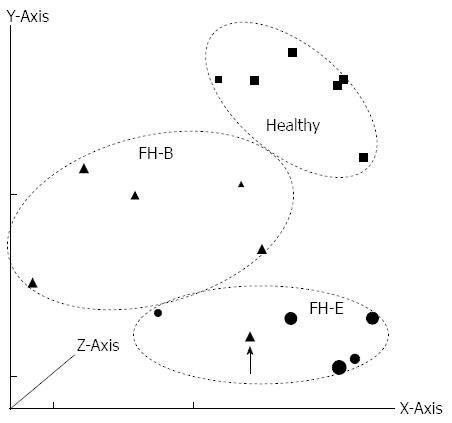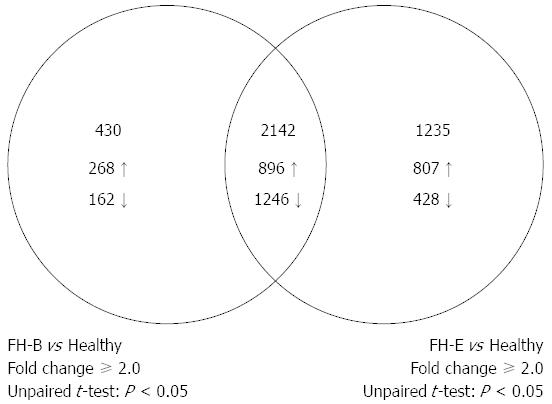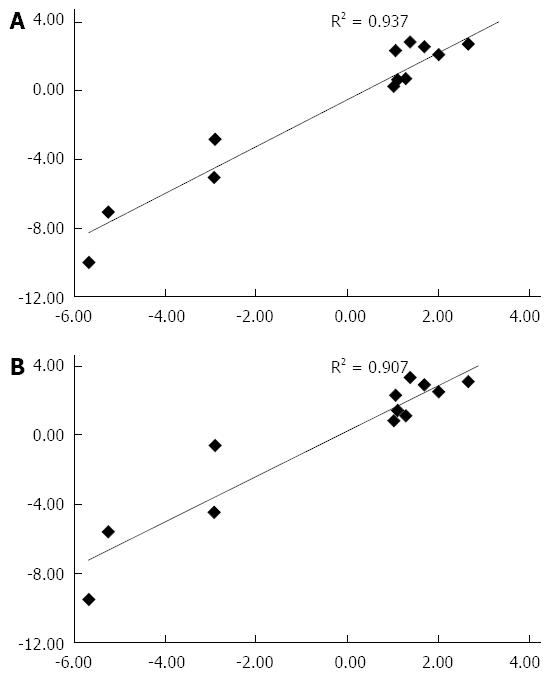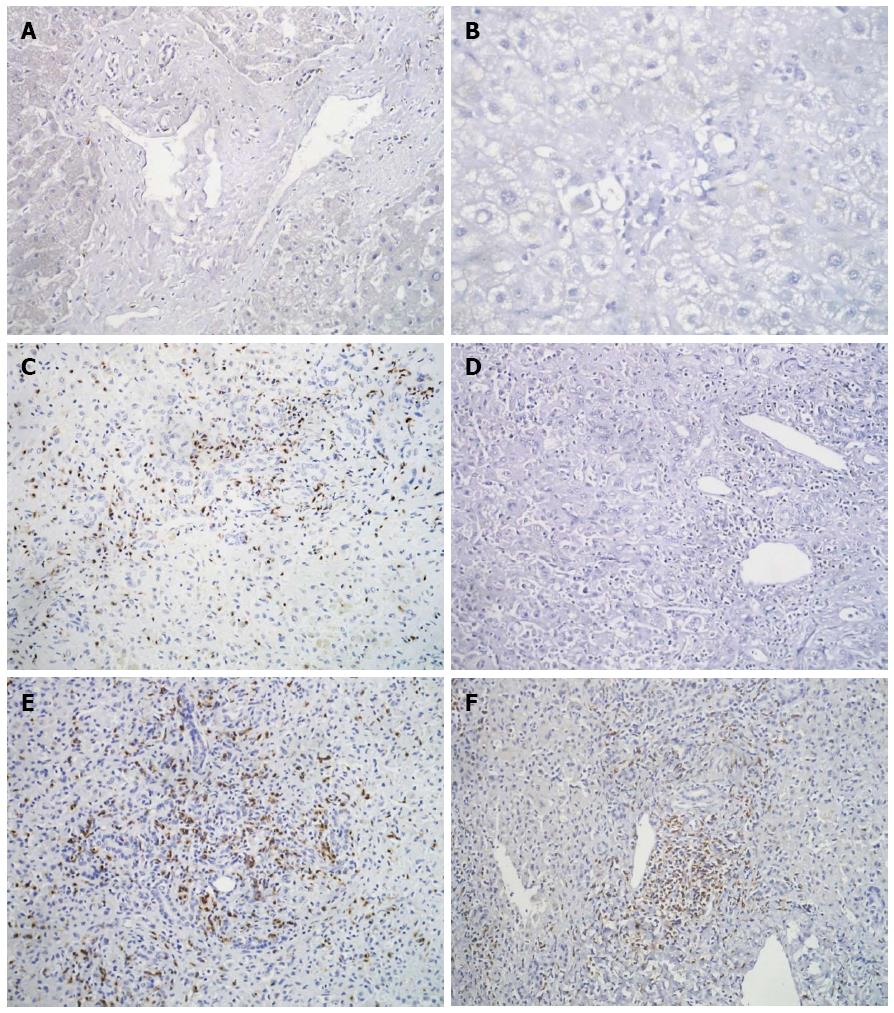Copyright
©The Author(s) 2015.
World J Gastroenterol. Jul 14, 2015; 21(26): 8032-8042
Published online Jul 14, 2015. doi: 10.3748/wjg.v21.i26.8032
Published online Jul 14, 2015. doi: 10.3748/wjg.v21.i26.8032
Figure 1 Principal component analysis of gene expression data from various specimens included in the study.
The components along X, Y and Z axes were 62.54%, 21.17%, and 8.88%, respectively. Patients with fulminant hepatitis E (FH-E) are represented using circles, those with fulminant hepatitis B (FH-B) using triangles and healthy controls using square symbols. The size of markers varies according to their placement on the Z axis. Patients with FH-E and FH-B clustered separately, except for one patient with FH-B who was an outlier (arrow).
Figure 2 Venn-diagram showing comparison of number of entities differentially expressed in liver tissue from fulminant hepatitis B or E, as compared to healthy liver tissue.
The intersection of two circles shows entities that were differentially expressed in both fulminant hepatitis E and fulminant hepatitis B.
Figure 3 Relationship of fold-change in RNA expression of selected genes in patients with fulminant hepatitis E and fulminant hepatitis B on real-time polymerase chain reaction with fold-change in RNA expression of the same genes on microarray analysis.
A and B show the data when reverse transcription polymerase chain reaction results were normalized using the GAPDH gene and 18S rRNA gene as housekeeping gene, respectively.
Figure 4 Immunohistochemistry for CD8+ cells in liver biopsies shows occasional cytotoxic T-cells in portal tracts of controls (A), and moderate infiltration in HBV (C) and HEV (E); immunostaining for CD4 shows absence of helper T-cells in portal areas of control (B), an occasional cell in HBV (D) and some small aggregates of helper T-cells in HEV (F).
A and B: Diaminobenzidine × 400; C-F: Diaminobenzidine × 200. HBV: Hepatitis B virus; HEV: Hepatitis E virus.
- Citation: Naik A, Goel A, Agrawal V, Sarangi AN, Chhavi N, Singh V, Jameel S, Aggarwal R. Changes in gene expression in liver tissue from patients with fulminant hepatitis E. World J Gastroenterol 2015; 21(26): 8032-8042
- URL: https://www.wjgnet.com/1007-9327/full/v21/i26/8032.htm
- DOI: https://dx.doi.org/10.3748/wjg.v21.i26.8032












